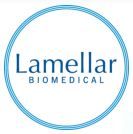PURPOSERadiotherapy-induced xerostomia (RIX) is the most common permanent side effect of radiotherapy (RT) to the head and neck (H&N). There is no effective topical treatment. LMS-611 is a mimetic of a natural lamellar body which prevents thick secretions like saliva from congesting organs. The primary objective of this study was to assess saliva properties before and during RT to the H&N. The secondary objectives were to re-assess saliva properties with the addition of LMS-611, measure inter-patient variability, correlate patient-reported symptoms with laboratory measurements and design subsequent first-in-human clinical trial of LMS-611.METHODSPatients with H&N cancer receiving RT as primary treatment were recruited. Patients completed the Groningen RIX (GRIX) questionnaire and provided saliva samples at baseline and weeks 2, 4 and 6 of RT. Saliva adhesiveness and viscosity were tested by measuring time taken to travel 5 cm down an inclined plane.RESULTSThirty patients were enrolled. The inclined plane test (IPT) results (s) were as follows: baseline 31.3, week 2 49.7, week 4 51.1 and week 6 55.7. Wide inter-patient variability was seen at baseline. GRIX scores increased as RT progressed. Spearman rank correlation coefficient of inclined plane tests with GRIX scores was -0.06 at baseline, 0.25 at week 2, 0.12 at week 4 and 0.08 at week 6. LMS-611 concentrations of 10 and 20 mg/ml significantly reduced IPT times on saliva samples.CONCLUSIONSSaliva becomes more visco-adhesive and RIX worsens as RT progresses. There is little correlation between objective and subjective measures of RIX. The addition of LMS-611 to thick, sticky saliva restores its fluidity ex vivo. This warrants in vivo analysis of the effect of LMS-611 upon RIX.







